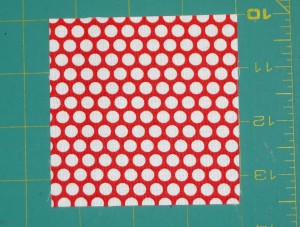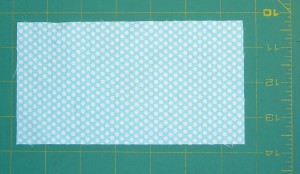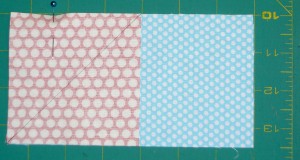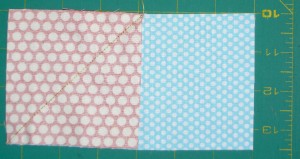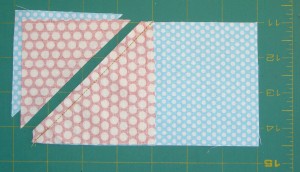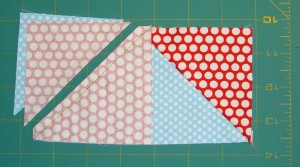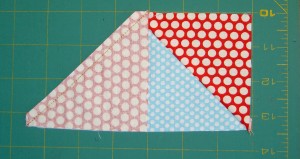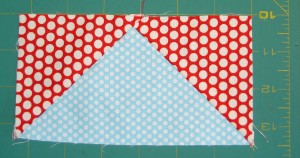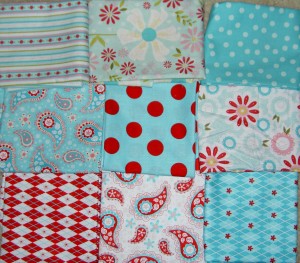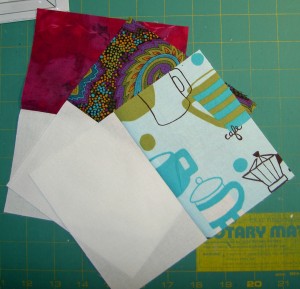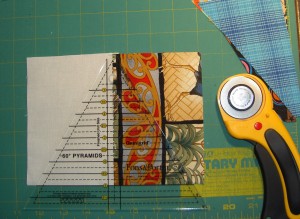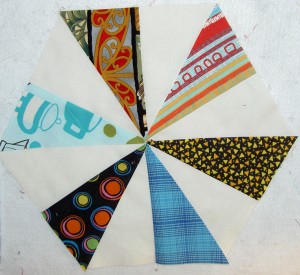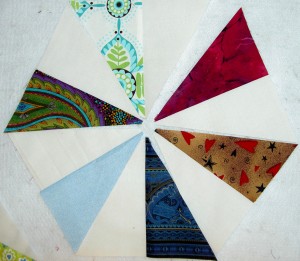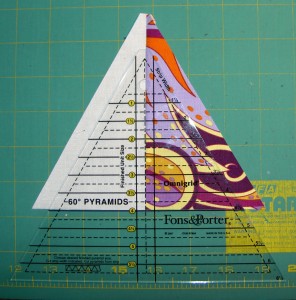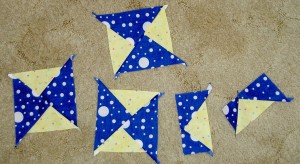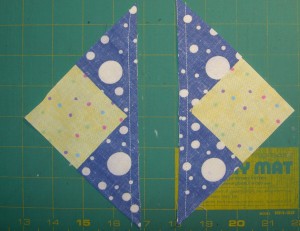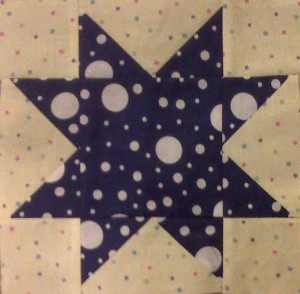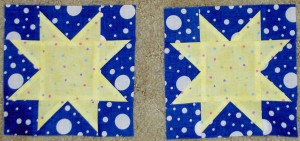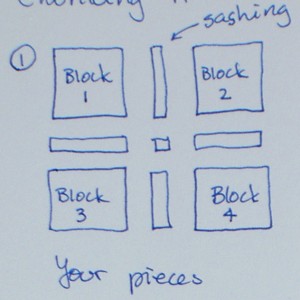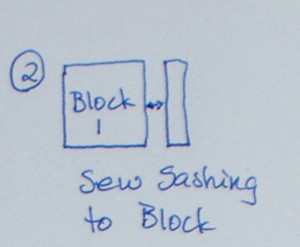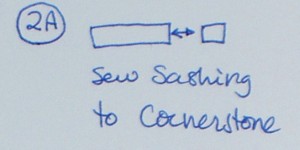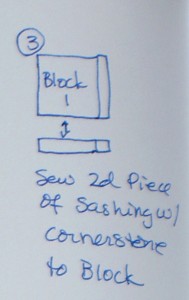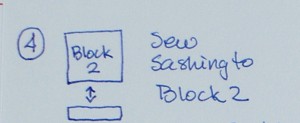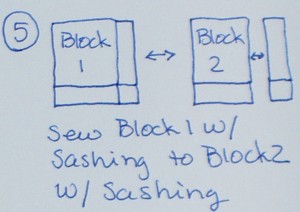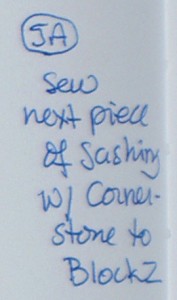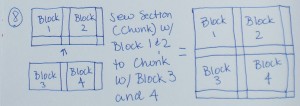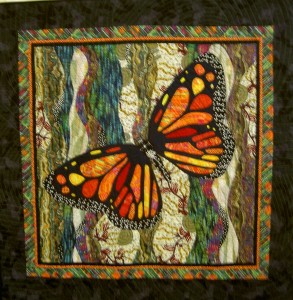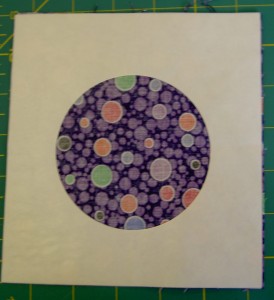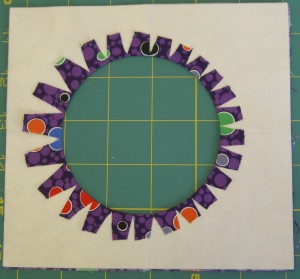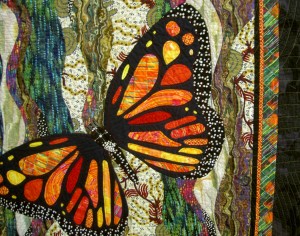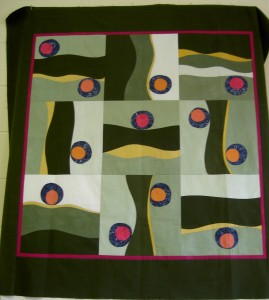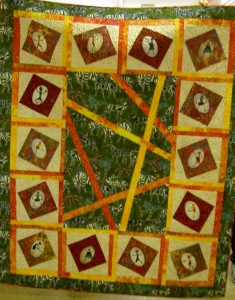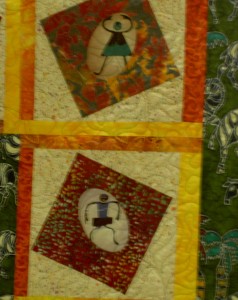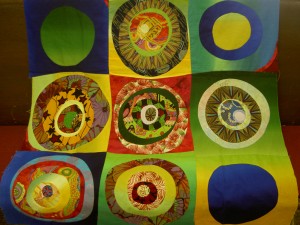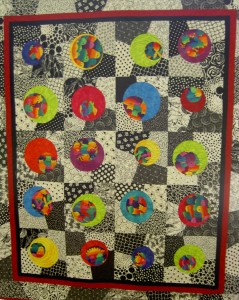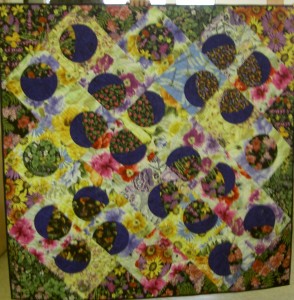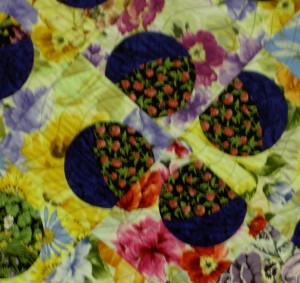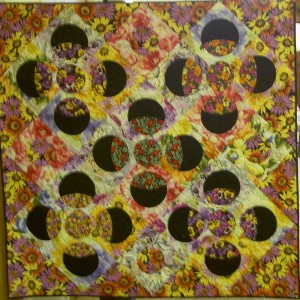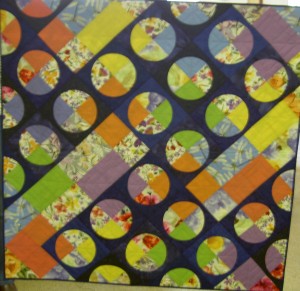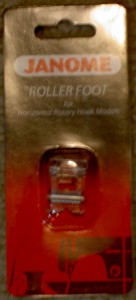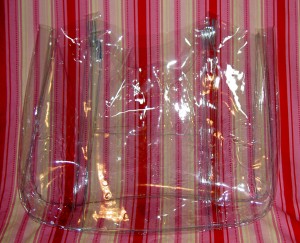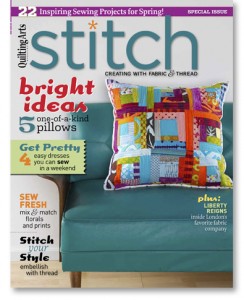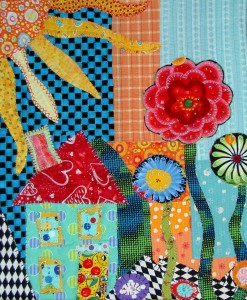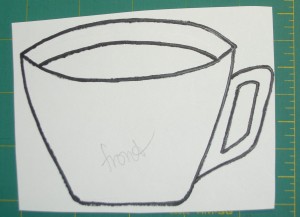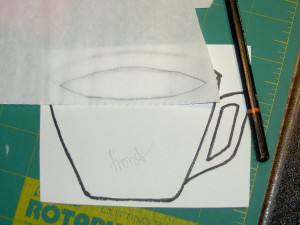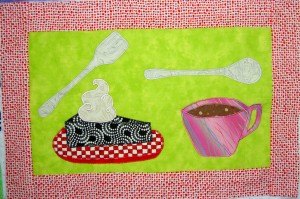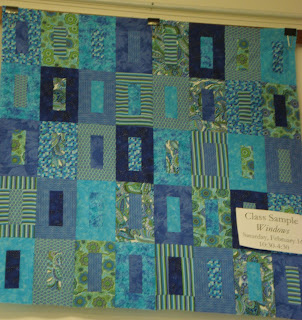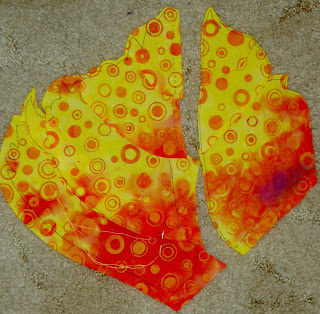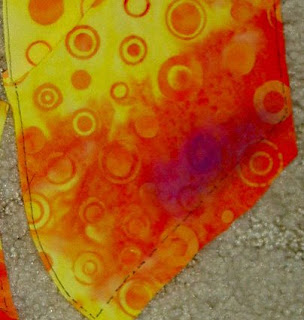The other night I caught a new episode of Love of Quilting and Jo Morton was a guest again. She was showing another technique for making half square triangles. I first became aware of Jo last year when I watched a previous episode of Love of Quilting.
Jo Morton is a fabric designer, writer and quilt designer. She has a website, where she sells, apparently, self-published, books, and a blog. She is also a designer for Andover Fabrics and has a large number of collections and projects on their site.
Based on what I saw Marianne and Jo do on the show, I tried the technique and was pleased with the results.
I got in touch with Jo, who was very quick about getting back to me, and asked whether she had technique sheets or sections in her books discussing the scalability of her techniques. She said that the market is geared towards projects and she didn’t have technique sheets. Too bad. I had trouble with her Flying Geese technique, but found the half square triangle (HST ) technique to be one of the best I have seen. It is straightforward, there is a minimum of dealing with bias and the squares magically appear all at once.
Since she didn’t have technique sheets, searched the web. I found a similar one posted on Wet Canvas. The Wet Canvas tutorial does a good job of showing the different ways of using the half square triangles. Most of the techniques were the square method (like what I describe below, but with one square making 2 HSTs, rather than a larger square making 8 HSTs) like the p.s. i quilt tutorial. I am also interested in the Quilt in a Day method and this tutorial talks about that. B’s Modern Quilting has the fish tutorial method.
I started with 5″ squares, which is the size they used on the show. The 5″ squares make 8 HSTs. I thought this would be a great way to use charm packs.

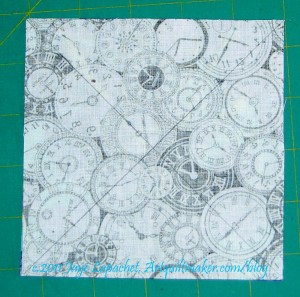

First, I drew an X, corner to corner, on the lighter square. Then I put the 2 squares right sides together and pressed them. If I had wanted to pin I would have pinned far away from any of the lines. I walked on the wild side and didn’t use pins.
Next, I sewed on each side of the lines, 1/4″ away from each line

After sewing, I measured 2.5″ from the side of the square.
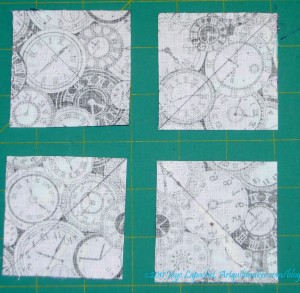
Cut the square in a plus configuration 2.5″ (middle of the X). I think you could cut on the pencil lines, but you have to cut in a plus configuration at some point and it seems to make sense to cut in the plus configuration first.
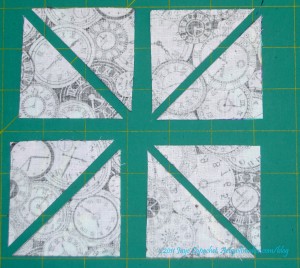
After you cut the plus, you will have four squares, each with a line drawn diagonally across the middle. Cut the squares in half diagonally. You can use the line as a guide. It is more important to line your ruler up corner to corner.
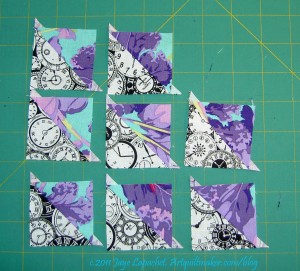
The result is 8 2″ half square triangles. The above are actually a thread or two larger than 2″, which leaves the perfect opportunity for trimming to make them an absolutely perfect 2″.

Trim the squares to 2″. Trim on all four sides. Don’t be tempted to trim just on two sides. Line the 45 degree angle line on your ruler up with the diagonal seam line on your HST and trim on all four sides.
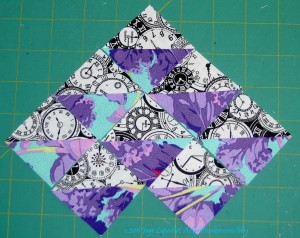
Now you have 8 beautiful HSTs. The bias edges shouldn’t be scary for you on the regular method, but this method makes HSTs much easier. I think this would be a fabulous method to make a lot of HSTs in a short amount of time. It is similar to a tutorial that p.s. i quilt posted, but times 4. I am planning to try out different sized beginning squares to see what sized HSTs I come up with.
I talked over the math with my DH and came up with a chart showing the different sizes you can make with this technique.
Links:
- Jo Morton website
- Jo Morton blog
- Jo Morton on Andover
- Wet Canvas tutorial
- Carole’s Quilting Adventures tutorial
- B’s Modern Quilting Fish Tutorial
- p.s. i quilt HST tutorial
